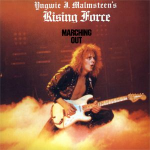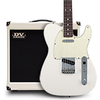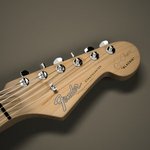Attraverso il nostro store puoi supportare il forum e nel contempo, ottieni un simpatico gadget da poter utilizzare!

CLICCA QUI
utilizza il codice jb20
e ottieni subito uno
sconto del 20%
su tutti gli articoli!

CLICCA QUI
utilizza il codice jb20
e ottieni subito uno
sconto del 20%
su tutti gli articoli!
Supporta Jamble!
Obiettivo Anno 2025:
€240.00
Data di scadenza: dic 31
Totale ricevute: €130.00
Tasse PayPal: €6.87
Saldo netto: €123.13
Manca all'obiettivo: €116.87
Valuta del sito: EUR
Data di scadenza: dic 31
Totale ricevute: €130.00
Tasse PayPal: €6.87
Saldo netto: €123.13
Manca all'obiettivo: €116.87
Valuta del sito: EUR
51%
Un grandissimo grazie a chi ha donato in questo periodo.
dic-15 Anonimo EUR10.00
dic-5 Anonimo EUR50.00
dic-3 Nadir EUR10.00
nov-12 Anonimo EUR10.00
ago-28 AngeloANC EUR20.00
mar-22 LawHunter EUR20.00
gen-28 Anonimo EUR10.00
-
 dubbi su amplificatore...
di robland
dubbi su amplificatore...
di robland
[17 Dicembre, 2025, 11:24 PM] -
 Possibile attacco hacker
di elzeviro
Possibile attacco hacker
di elzeviro
[17 Dicembre, 2025, 07:53 PM] -
 prova traduzione audio YouTube
di Vu-meter
prova traduzione audio YouTube
di Vu-meter
[17 Dicembre, 2025, 06:42 PM] -
 One Control BJFE - Shades Of Green O.D. DLX
di Vu-meter
One Control BJFE - Shades Of Green O.D. DLX
di Vu-meter
[17 Dicembre, 2025, 07:47 AM] -
 Ampli valvolari: qualche mito sfatato
di Jessie_Greg_Music
Ampli valvolari: qualche mito sfatato
di Jessie_Greg_Music
[16 Dicembre, 2025, 09:32 PM] -
 Sire by Larry Carlton - chitarre economiche ma di qualità...
di robland
Sire by Larry Carlton - chitarre economiche ma di qualità...
di robland
[16 Dicembre, 2025, 03:37 PM] -
 Ma quanto mi piace Robben Ford
di Vu-meter
Ma quanto mi piace Robben Ford
di Vu-meter
[16 Dicembre, 2025, 06:39 AM] -
 Prosit's basic gear
di Prosit
Prosit's basic gear
di Prosit
[15 Dicembre, 2025, 10:29 PM] -
 Fender '62 Super Amp - la via di mezzo?
di Prosit
Fender '62 Super Amp - la via di mezzo?
di Prosit
[15 Dicembre, 2025, 04:53 PM] -
 Quale Chorus ? Consigli...
di Vu-meter
Quale Chorus ? Consigli...
di Vu-meter
[15 Dicembre, 2025, 07:31 AM] -
 Discografia Pink Floyd
di robland
Discografia Pink Floyd
di robland
[14 Dicembre, 2025, 09:07 PM] -
 Pedale Rotto... Mxr Microamp
di Donatello Nahi
Pedale Rotto... Mxr Microamp
di Donatello Nahi
[14 Dicembre, 2025, 08:28 PM] -
 VENDO Flashback X4 Delay
di Mistergiba
VENDO Flashback X4 Delay
di Mistergiba
[14 Dicembre, 2025, 03:43 PM] -
 Thomas Raggi va a trovare Norman
di elzeviro
Thomas Raggi va a trovare Norman
di elzeviro
[14 Dicembre, 2025, 08:59 AM] -
 Rob's guitars
di robland
Rob's guitars
di robland
[10 Dicembre, 2025, 06:30 PM] -
 Ad oltranza...Vasco
di elzeviro
Ad oltranza...Vasco
di elzeviro
[10 Dicembre, 2025, 01:13 PM] -
 Derek Trucks, the King of the slide
di elzeviro
Derek Trucks, the King of the slide
di elzeviro
[10 Dicembre, 2025, 09:41 AM] -
 Brunetti Singleman
di Vu-meter
Brunetti Singleman
di Vu-meter
[09 Dicembre, 2025, 12:50 PM] -
 Ci ha lasciati Steve Cropper (03/12/2025)
di Jessie_Greg_Music
Ci ha lasciati Steve Cropper (03/12/2025)
di Jessie_Greg_Music
[09 Dicembre, 2025, 10:42 AM] -
 Musica leggera e cantautorale italiana
di Santano
Musica leggera e cantautorale italiana
di Santano
[08 Dicembre, 2025, 10:55 AM] -
 Cosa ascoltano ultimamente i Jamblers?
di Donatello Nahi
Cosa ascoltano ultimamente i Jamblers?
di Donatello Nahi
[08 Dicembre, 2025, 12:08 AM] -
 L'ACTION sull'acustica
di Donatello Nahi
L'ACTION sull'acustica
di Donatello Nahi
[08 Dicembre, 2025, 12:04 AM] -
 Consigli prolunga cuffie
di hellequin
Consigli prolunga cuffie
di hellequin
[07 Dicembre, 2025, 11:15 PM] -
 FURTO - Godin Montreal Premiere
di robland
FURTO - Godin Montreal Premiere
di robland
[07 Dicembre, 2025, 02:54 PM] -
 P90 : comparazione
di robland
P90 : comparazione
di robland
[07 Dicembre, 2025, 02:24 PM] -
 Che corde usate?
di Donatello Nahi
Che corde usate?
di Donatello Nahi
[06 Dicembre, 2025, 06:12 PM] -
 Piccola riflessione post furto
di robland
Piccola riflessione post furto
di robland
[05 Dicembre, 2025, 11:40 AM] -
 Slash e i Guns & Roses
di Kla
Slash e i Guns & Roses
di Kla
[05 Dicembre, 2025, 07:07 AM] -
 Un brano dei Beatles - proposte
di Santano
Un brano dei Beatles - proposte
di Santano
[03 Dicembre, 2025, 06:46 PM] -
 Modifica ampli
di Vu-meter
Modifica ampli
di Vu-meter
[03 Dicembre, 2025, 10:58 AM]


